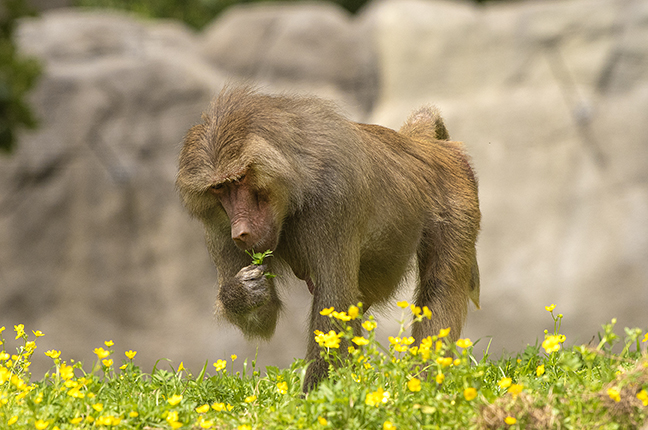Welcome!

The NC Zoo’s baboon band are back to interacting with zoo guests after the renovated habitat reopened on May 23. Eric Abernethy / Randolph Hub
Baboon habitat reopens for first time since 2021
Debbie Foster Fuchs
NC Zoo
ASHEBORO — The North Carolina Zoo held the grand reopening of the long-awaited, renovated baboon habitat on Tuesday. The baboon “band” (a group of baboons) has been living behind the scenes on zoo grounds during the renovation and additions to their habitat, which began in 2021.
One of the most popular attractions, the hamadryas baboon species, has been at the Zoo for 45 years. The Zoo’s band of 22 baboons ranging in age from senior adults to infants is the largest in the United States (tied with San Diego Zoo).
Renovations
The total price tag for the new Baboon habitat construction was $5.2 million, funded by the voter-approved N.C. Connect Bond in 2016.
Additional spaces in the renovated habitat will soon open, including a new 4,000-square-foot dayroom and indoor quarters with viewing areas that will make the baboons regularly visible to guests. This unique configuration provides baboons with spacious areas designed to mimic habitats in the wild, including a 40-foot vertical climbing and play area.
Fun fact: The new dayroom is fashioned to emulate Ethiopia Lalibela architecture from the 13th century, specifically to honor baboons' roots. Hamadryas baboons are native to the Ethiopian highlands in the northeastern region of Africa.
“A key part of our mission is to improve the quality of life in North Carolina by sharing and preserving our natural world, which stimulates learning, encourages recreation and conservation, and promotes economic development,” said DNCR Secretary Reid Wilson. “Each time we improve or expand the offerings at the NC Zoo, we are also expanding opportunities for conservation education and for families to have fun together.”
“We are grateful for the consistent support from the state and people of North Carolina who truly made this renovated habitat possible with the NC Connect Bond,” said Director and CEO Pat Simmons of the North Carolina Zoo. “Tourism is the second largest industry in the state; we look forward to bringing even more to our state with further expansion.”
About hamadryas baboons
In hamadryas baboon society, large troops form when baboons gather together at sleeping spots for better protection at night. As the troop leaves a sleeping site, it breaks down into smaller groups called bands that break apart from the troop to forage and travel together. Most social interactions happen within bands.
Hamadryas baboons are large-bodied monkeys with muscular build. Male hamadryas baboons have a distinctive mantle (mane) of long silvery hair, bright pink face and backside while females have light brown fur.
Hamadryas baboons can live up to 20 years in the wild and up to 31 years under human care. Males weigh 40-45 pounds, and females 20- 25 pounds.
Hamadryas baboons exist in stable populations and are listed as a species of Least Concern on the IUCN Red List of Threatened Species.
